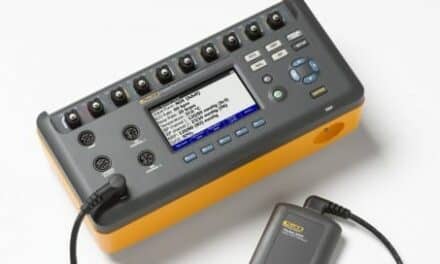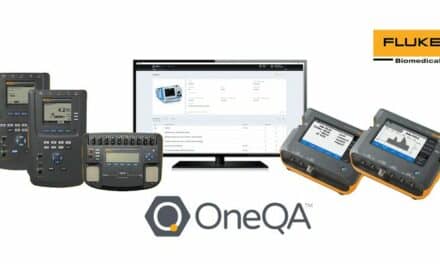In this expert roundtable—Michael James Walton, MSc, Rigel Medical’s category manager; Greg Alkire, Pronk Technologies’ vice president of sales and marketing; Tim Welby, BC Group’s vice president of sales and marketing; Michael Raiche, senior product manager at Fluke Biomedical—discuss what’s hot in the biomedical test equipment sector and how their companies are working to address the industry’s biggest challenges—and opportunities.
24×7 Magazine: It’s been three years since COVID-19 first came on the scene. Has COVID-19-related demand for test equipment—particularly devices to test respiratory devices—finally subsided?
Michael Walton: Relatively speaking, I’d say so on respiratory devices. Those levels were never going to be the status quo. Have we seen a decline with demand to pre-COVID volume? No, we have not, but perhaps that is masked by Rigel Medical’s growth? It’s hard to tell. There are parts of the world that are just coming out of restrictions so we aren’t truly in a post-COVID world.
Michael Raiche: Subsided, but not yet normalized. ICU-focused equipment was in high demand as funding went to the departments that needed it. Now, elective surgeries are back on along with general patient care, so all products are seeing increased demand levels. Being able to supply test equipment to the facilities that need it is still critical, so look to manufacturers who have managed the supply chain the best to ensure you get your test equipment in a timely manner.
Greg Alkire: The pandemic created an urgent need for a wide variety of test equipment. It also highlighted the demand for portable solutions that would allow biomedical engineers to service medical devices as efficiently as possible, particularly in emergency situations like the pandemic. This need has carried over to the present day and continues to drive our mission to provide the most durable, reliable products that all fit in the palm of a biomedical engineer’s hand, which makes it much easier to perform the service in any environment.
Tim Welby: While the demand still exists, it has obviously subsided compared to the height of the pandemic. This allows a more holistic approach to HTM-related equipment and not as much focus on one specific area.
24×7: What are the top trends in the biomedical test equipment sector, and how are they influencing the design and development of such technologies?
Welby: While Bluetooth capabilities are moving forward and expanding, we are also focusing on how to better support HTMs and OEMs through open discussion and seeking input from the industry. Developing smaller, more concise pieces of equipment, with touchscreen displays, are a plus to the end users by creating a more intuitive experience while still using instrumentation.
Walton: We’ve seen a trend in the U.S. marketplace to move toward automatic testing, where in the past the market swayed toward a manual type of tester. With [automatic testing], there is no need to have apps or software to drive the hardware to perform a sequential preventive maintenance schedule and save results. There are many benefits to reduce risk in a healthcare organization using automatic testing, particularly highlighting safe limits of testing.
Raiche: The number of assets keeps growing, and so do the demands on HTM staff. Productivity solutions are in high demand as facilities are looking to get more done with less. Look for test automation to play a large role in driving efficiency with stricter adherence to procedures across facilities. Plus, integrations with software packages—for instance, computerized maintenance management systems—which provide a more seamless workflow, will be in greater demand.
Alkire: The shortage of biomedical engineers created a real challenge in our industry. To help address this head on, we continue to focus on our Pronk Mobilize® wireless solution that enables biomedical engineers to create their own test protocols or utilize Mobilize OEM-level procedures that wirelessly transmit the commands to the test equipment. That allows them to execute the tests required from their smart device.
24×7: What are some of the biggest challenges currently affecting the biomedical test equipment sector? How are you actively working to overcome them?
Welby: Supply chain is still a challenge. At BC Group, we have our own internal engineering department, which allows us to pivot as necessary to make important changes. This is essential to meeting our customers’ needs and requirements.
Alkire: The administrative responsibilities of a biomedical engineer can be tremendous, including completing a multitude of service reports, closing out all work orders, and more. Test equipment manufacturers need to provide better solutions to help address this issue. This has been a key motivation for Pronk in developing the Mobilize wireless solution as an open platform that can integrate other brands of test equipment. Mobilizeprovides a single user interface to communicate to a wide range of test equipment, as well as the ability to collect all the test data electronically for integration to a database/CMMS in a more complete and simplified way.
Walton: We’re hearing about a couple of things right now. For starters, there’s an increased focus on home medical care, which introduces some level of uncertainty with the asset management of medical equipment, particularly scheduling and servicing availability. Fortunately, Rigel Medical devices are highly portable, which satisfies the problem/solution for mobile testing.
Another pain point we’re hearing about is networked medical equipment, or “connected” medical equipment. A recent survey we pulled together revealed that only 20% of biomeds found this process uncomplicated. But since hospital IT departments generally own this task, I’m not entirely sure if there is a product or solution to ease that pain; rather, there’s a shift in roles and responsibilities for modern biomeds to become more IT-orientated in the future.
Raiche: There are three key challenges, and here’s how Fluke is working to overcome them.
- Supply chain: Our ability to actively manage suppliers to ensure products are available to ship to customers.
- Spare parts: Like with the supply chain, customers are waiting a long time for spare parts, which causes downtime. Our ability to manage the supply chain enables us to provide customers with the spare parts they require.
- Staffing: Biomedical training programs are closing and professionals are retiring, thus exasperating the problem of doing more work with less time. At Fluke, we continue to provide creative options to help manage staffing gaps with Advantage Training, an intuitive user interface, and dedicated sales support.
24×7: As those who handle and maintain biomedical test equipment, what should HTM professionals know?
Raiche: They should know just how critical a role they play in the hospital environment and that their knowledge and expertise are invaluable to staff and patients. These critical frontline workers are the “everyday heroes” that are mentioned in Fluke Biomedical’s mission statement.
Walton: Rigel Medical goes the extra mile to provide free-of-charge training; education for the biomedical community, uber-reactive support teams; and, of course, local, quality calibration and service, keeping turnaround times well within the industry standard. Our test equipment is designed to fit the workflow and application of every level of biomed—Plus, our devices are highly portable, although they also work as permanent benchtop equipment.
Alkire: Service and calibration of test equipment is very important. Biomedical engineers know to review the calibration certificate of their test equipment and confirm what standards the service company adheres to. They may not know that as a rule of thumb, the test equipment utilized to calibrate biomedical test equipment should have four times or more better accuracy (uncertainty) than the test equipment being calibrated, which is referred to as the test accuracy ratio, or TAR, or test uncertainty ratio, or TUR.
This is commonly represented as a ratio—i.e., 4:1 TUR. This will give high confidence that the calibration is performed effectively. When 4:1 ratios cannot be achieved, they should be disclosed on the calibration certificate; that way, the user understands possible limitations in the accuracy of the calibration performed on their biomedical test equipment.
Welby: If biomeds have any questions or concerns, they shouldn’t hesitate to pick up the phone to call us. Both bcgroupstore.com and YouTube have a plethora of “how-to” videos that may be of assistance.
24×7: Anything else 24×7 Magazine readers should know about the test equipment sector?
Welby: The test equipment sector continues to evolve. As such, open communication with vendors is an effective approach to share thoughts and ideas to improve the industry.
Walton: Rigel Medical will continue to develop new technologies for biomeds and the industry. The niche world of biomedical engineering can expect some surprises in the coming years.
Alkire: Biomeds have options when deciding upon the right test equipment to suit their needs. Evaluating features, performance, and reliability are key considerations. Pronk products, for example, include a warranty of four years—thus providing high confidence in the reliability of our products.
Our product designs also are unique in that they are certified to withstand being dropped 50 times from 3 feet and still pass performance tests within specifications. We also offer configurable features, options, and bundles to balance the needs for features and budget considerations simultaneously. This flexibility toward the wide-ranging needs of our customers is something that we take pride in providing.
Raiche: As an innovator in the industry, we are committed to delivering products and services that add value to the HTM community and help them do their jobs more efficiently and effectively.





